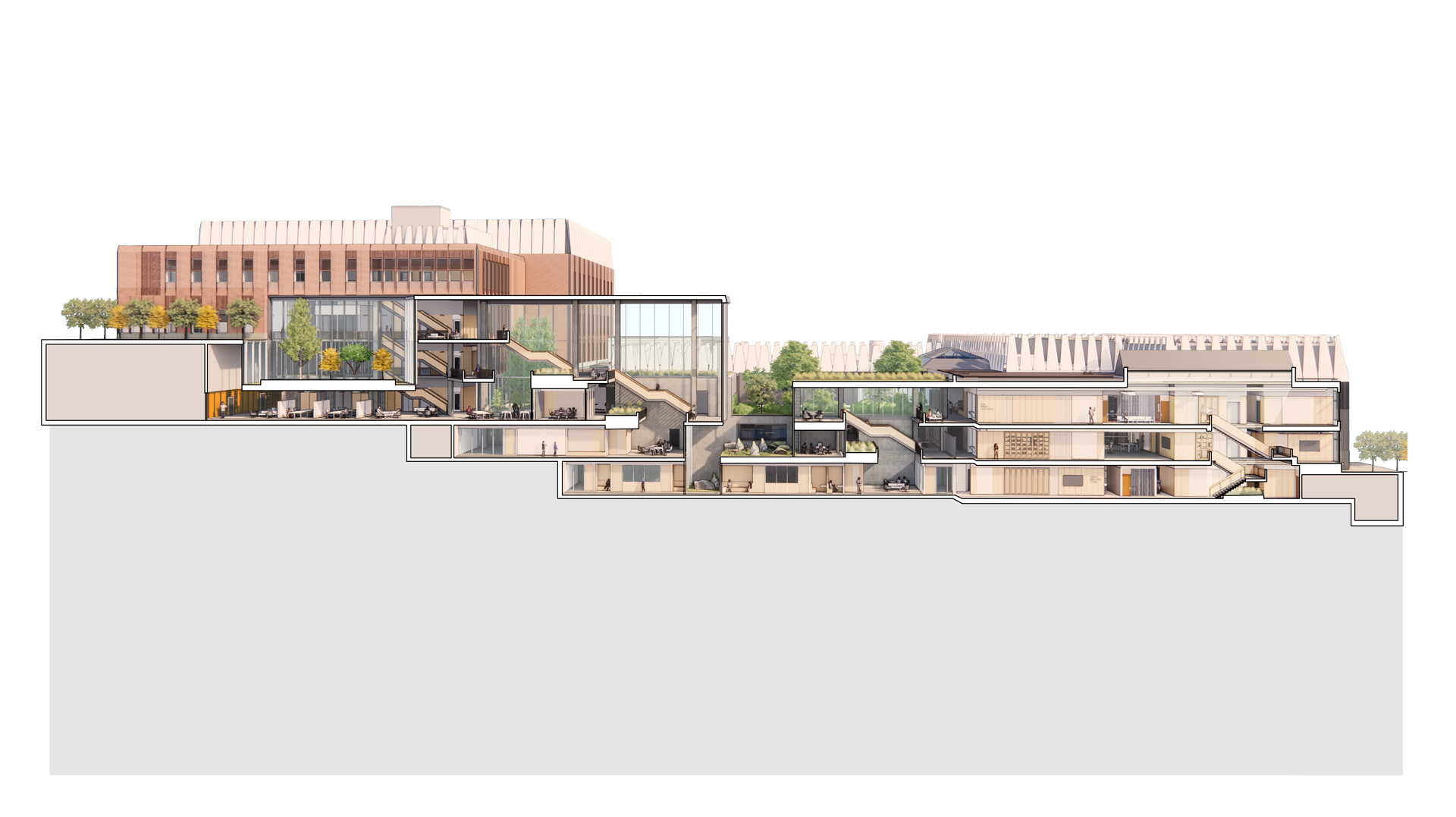Yale University Upper Science Hill Development, New Haven, CT, USA

TenBerke, in collaboration with Ballinger, is designing the Upper Science Hill Development (USHD) at Yale University. The 611,000 square-foot complex will be an intellectual hub and world-class environment for quantum science, engineering, and materials initiatives, including atomic, molecular, and optical physics (AMO) and condensed matter physics. In scale and in its focus on quantum research, the endeavor is without precedent in university science facilities in the United States, while ambitiously targeting outstanding energy performance and net zero operational carbon emissions. As one of Yale’s largest, most complex building projects ever undertaken, the design embodies the university’s commitment to the well-being of its scientific community, the expansion of scientific excellence, and the decarbonization of its scientific research infrastructure.
Vibration control is one of the primary design drivers for quantum science facilities, and Science Hill’s sloping site close to bedrock was chosen for its exceptional vibration stability. From the base of the hill, the USHD is conceived as a series of interconnected pavilions that climb upwards. Terracotta and glass facades play off one another: transparency will allow in natural light and reveal the scientific activity within, balanced with masonry that is contextual to the campus. Expressive roofscapes screen off the substantial mechanical equipment required, visually unifying the roofline while adding character to the striking architecture on campus.
Along this central path, one is always seeing across, into, down, or up at research hubs and neighborhoods, where teams of experimentalists and theorists at all levels – principal investigators, research scientists, groups of graduate students and postdocs – work alongside one another. Though much of the building will be below-grade, the design brings daylight deep into the structure, with light and planted courts providing strategic landmarks and visibility outdoors.
The USHD will lead the decarbonization of Science Hill. A new, all-electric thermal plant will recover heat from the greater Yale campus in the winter and draw from geothermal storage, heating and cooling not just the USHD but also some eleven present and future science and engineering buildings. The design integrates service nodes for a connected set of science buildings, choreographing long-term equipment movement as well as everyday logistics.
The project will be completed in two phases, targeting construction completion in 2030.










